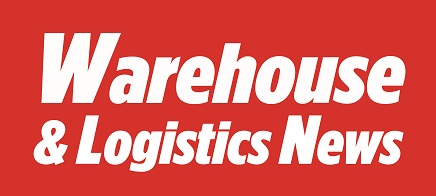Meat, Fish, flowers, pharmaceuticals – they all have one thing in common. They all need cold storage to keep them fresh and viable as they travel from field and factory to market, writes Thorsten Mauritz, European Marketing Manager, Rite-Hite Europe.
 In Europe alone, it’s an industry currently valued at nearly $140bn (2022) and projected to reach more than $575bn by 2031, with a 17 per cent per annum (CAGR) between now and 2031 (Market Research Update figures – March 2024), with growth driven by consumers’ desire to eat fresher food and to buy online.
In Europe alone, it’s an industry currently valued at nearly $140bn (2022) and projected to reach more than $575bn by 2031, with a 17 per cent per annum (CAGR) between now and 2031 (Market Research Update figures – March 2024), with growth driven by consumers’ desire to eat fresher food and to buy online.
But some winds of change are blowing through the cold supply chain. Strict regulations govern cold chain logistics in Europe to ensure quality and safety across three main areas: transportation; packaging; and product monitoring.
Keeping up with regulations can be challenging. An equal challenge is the need to control costs. So, what can cold warehouses do to enhance the integrity of cold chain storage?
Dock Design
Consider upgrading any loading dock to the new gold standard drive-through system. Trailers can back into the dock before breaking the seals which means goods are not exposed to outside temperatures or contaminants.
The system has two core components. The first is a vertical storing leveller, enabling the loading dock door to close directly onto the pit floor, reducing exposure to the outside air and securing the dock. It also keeps boots off the drive approach and people out of harm’s way and lowers the risk of theft, tampering or injury.
A second component is a specially designed drive-through dock. Dock sealers provide a tight four-sided perimeter seal with the trailer, allowing doors to be fully opened and closed during loading and unloading. The 360º seal stops warm airflow into the warehouse.
Condensation and Frost
Warm airflow into warehouses commonly causes condensation on surfaces. Refrigeration warehouses are required to verify and document solutions to frost and condensation build-up, with building defects no longer an acceptable excuse. Regulators want to prevent water from dripping onto and compromising the quality and safety of stored food and pharmaceuticals.
There are two potential solutions to fix condensation and frost on the floor. First, any gaps between trailers and the perimeter of the loading dock must be sealed to prevent warmer outside air from entering the warehouse, hitting the cold concrete floor and forming a slippery surface of condensation.
In many warehouses, there can be a temperature difference of over 200F between the cold floor and warm ceiling. High-volume, low-speed (HVLS) fans can reduce the temperature difference to one degree by mixing the air. The warmer it is at floor level, the less condensation will form, and the less likely worker or forklifts will slip and fall.
Another slip hazard is frost on the floor. It is often found near freezer doors or temperature zone separating doors. As frost piles up, doors may not close properly, causing temperature fluctuations. Blast freezer doors which can be up to 25 foot square, typically become heavily laden with frost. Employees find them so hard to open that they can resort to using a forklift truck which is hazardous to them and the freezer.
But customised curtain walls explicitly designed for blast freezers can form a safe and affordable airflow and thermal barrier to help prevent frost build-up and temperature fluctuations. They open and close quickly to restrict warm air flows into and around the freezers. Doors are available that operate at 25m/sec, helping keep food and pharmaceutical products at strict or mandated storage temperatures.
For the cold storage industry, there are huge changes happening. Some new technologies, such as loading bays, or safety barriers, are not complicated upgrades but are necessary to conform to regulatory standards for cold supply chain integrity and employee safety.





Comments are closed.